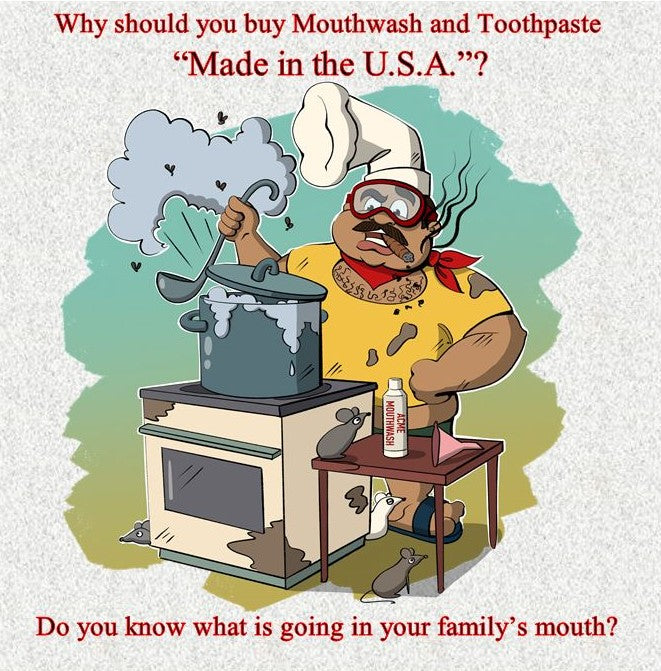Nowadays, if it does not say made in the USA, you cannot be sure of where it was actually manufactured. Many all–American businesses are now manufacturing their products in other countries to cut costs and the regulations on labeling are changing every day.
In the news recently, there have been warnings about toothpaste manufactured in China that contains a poisonous ingredient that is usually found in automobile radiator coolant. Rather than focus on the negative aspects of this news, and the poor standards used in manufacturing and exporting maintained in other countries, it may be a really good time to reflect on the standards that the American manufacturer maintains in the production of personal care products that we have, until this time, taken for granted.

A consumer gives little thought when they pick up their toothpaste in the morning as to the safety of the ingredients or packaging that goes into producing that tube. We expect there will be protections for us as consumers against shoddy manufacturing practices, but usually little is known about the process.

The first step a manufacturer goes through is the state and local licensing of the laboratory or facility where the product is to be made. Facilities are inspected to make sure that the building and areas are clean and adequate for the process that is proposed, and that all systems are sanitary. There are OSHA safety standards with which the facility must comply, which include having safety data sheets on file for every chemical or ingredient used in every product manufactured or used for cleaning on the grounds of the facility.
State and local laws including wages, insurance and safety standards cover employees. Lab workers are required to wear disposable paper head covering at all times, and in the formulating areas, protective clothing such as lab coats is worn. Workers in other countries often work in unsanitary and abysmal working conditions and are paid a miserable wage.
Then there are the labeling standards set forth by the FDA. When a new product is being developed to bring onto the market for over the counter sale, the label must be in compliance with FDA regulations. The proposed product label is sent to a lawyer that specializes in FDA regulations. They check to make sure that there are no false health claims on the label, and that each and every ingredient is on a list issued by the FDA as GRAS (generally regarded as safe) this is a list of ingredients that include chemicals, botanical and inert ingredients that have been tested and have been cleared as being safe for consumers to use. The approved label is sent back to the manufacturing facility. Each product must have an approved label on file in the manufacturing facility where it is manufactured. Aside from the labeling considerations, the FDA also inspects manufacturing facilities. Among the things they would be inspecting would be the water systems. For example, if purified water is used in products, there must be an exact log on file of the tests that were done on the water when the manufacturing process on a particular product were begun, and again, at the end of that product run. There must also be a log of batches or lots of each product and the date of the manufacture. Each product must have a lot number and expiration date stamped or crimped onto the product. When a product such as toothpaste is finished; it is tested for quality and purity. It must then remain in quarantine for several days, and then retested for bacterial contamination before it is released from the manufacturing laboratory for distribution.![]()
When a comparison is made between the high standards that must be met by the American manufacturer of toothpaste and a product made in a country with little or no oversight on manufacturing, ingredients or the facilities in which they are produced, it makes little sense NOT to buy toothpaste proudly “Made in the USA.”

